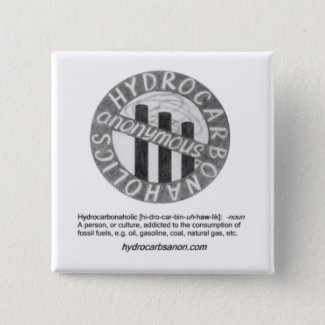The home energy audit guy never even got to open his magic bag of compact fluorescent light bulbs; the only incandescent we have left is a bathroom heat lamp. And I was able to show *him* a thing or two about LED lighting; the four bulb array over my desk: 160 watts incandescent, 60 watts using compact fluorescents, but only 6 watts of LEDs.
We’ve got an Energy Star clothes washer, fridge, and dishwasher, too.
What he had to offer—what the feds, the state, and my gas company are willing to chip in toward—those things I can’t do.
We could use more attic insulation, for example, and the utility would pick up 75% of the first $2000—which would be most of the cost. But. . .
As a matter of code compliance, they can’t insulate unless the roof has vents, which mine does not and cutting holes in this old roof—due for replacement when we bought the house, almost twenty years ago—would be a BAD idea.
We don’t just need a new layer either—that’s been done and done and done—we need to strip everything off, right down to the older asbestos-laden shingles that would be a hazardous waste disposal issue. A $12,000 job, if we’re lucky, and I’m not aware of programs under which gummint at any level is paying me for that. Same obstacle to installing a solar water heater—the $8000 cost brought down to a tempting $3000 out of pocket, when you add back all the rebates and credits.
The house was built in 1914; the boiler is original equipment. Started out burning coal, was converted to oil, then converted to gas. We could get a good deal on replacing our cast iron snow man. But. . .
That would mean tenting part of the basement, stripping (what else?) asbestos off the boiler and the connecting pipes, then smashing the thing to pieces to get it out of the house.
Unless someone puts cold water in it when it’s hot, and cracks it, moreover, that boiler’s going to outlive me. A newer, somewhat more efficient unit? My plumber gives it, maybe, ten years.
Never mind the US, I’d like my *family* to be energy independent. I’ve won the light bulb game; I’ve got most of the right appliances.
For the bigger items, it’s not the cost of technology that’s holding me back; it’s the cost—and the limitations—of owning a 95 year old house.
The average US house is about 34 years old; just over a quarter of our housing stock is more than fifty years old. If we are really going to push down home energy usage, we’re going to have to more comprehensively address the problems associated with retrofitting.
Show people what you believe! Hydrocarbsanon Gear:
5% of proceeds from any purchase at our stores at Skreened, Cafepress, Zazzle, or Spreadshirt goes to e-BlueHorizonssm which uses the money to retire greenhouse gas credits.
Saturday, April 25, 2009
Sunday, April 19, 2009
Can We Just Bury the Carbon Problem?
According to the New York Times, SCS Energy, of Concord, MA is looking to build a coal-fired power plant—in lovely Linden, New Jersey, famously part of the early beats of the Soprano’s title sequence—with the CO2 it emits to be piped out into the ocean, and sequestered beneath the seabed, about a hundred miles off the coast of Atlantic City.
This isn’t so much the stuff of nightmares to me as it is cause for dyspepsia, another irritating, and diversionary, sideshow. Is carbon capture and sequestration possible? I don’t know. It’s being explored in a variety of places, from a variety of angles. For the most part, the research is genuine and the intentions sincere—the article notes that the one seabed project extant has been running for the past thirteen years, 155 miles off the cost of Norway.
The rhetorical use of carbon sequestration, however, strikes me (as almost always) as A Clarion Call to Inaction! of the “Don’t worry, we’ll just. . .” variety. No need to change our lifestyles or our mindsets. More digging (drill, baby, drill!), more burning (burn, baby, burn!), and we’ll all be just fine.
I can’t recall the name of the former US Congressman who died in the last six months or so, famous for saying (surely not uniquely) that “most problems started out as clever solutions of one sort or another.”
Carbon sequestration falls into that category, as far as I’m concerned.
I’m not a geologist, so I can’t render a professional judgment of the odds that sequestered CO2 might belch up out of the ocean or other subterranean repositories. But it seems to me like a shaky bet to make in order to extend the life of a fundamentally bad system.
Putting aside what happens when you burn it, there’s just no such thing as “clean coal,” from mountaintop removal mining, to transportation, to coal ash sludge repositories. Oil and gas have their own, rather similar, filthy problems, even before you get to greenhouse gases. As to the “greening” of nukes: fifty years in, we still have no permanent nuclear waste storage solution, and the US is littered with radioactive patches, both military and civilian; the stopgap measure has been to store most waste on-site at generating facilities.
The Times ran another piece (8 April ’09), “Not So Green After All: Alternative Fuel Still a Dalliance for Oil Giants,” which makes an apt bookend to the carbon sequestration piece.
Both articles highlight a trend of longstanding that’s particularly galling because it’s been particularly successful: after fighting the idea of climate change in the eighties and nineties (a misuse of the spirit of the Fairness Doctrine as egregious as that of the tobacco industry), what Old Order Energy Producers have switched to, in the current decade, is the strategy of saying publicly, often, and in dulcet tones that they understand the problem and they’re definitely going to do something about it.
They're banking (not without evidence) that when we wake up from our naps, we won't remember that we were promised ice cream--or, at any rate, we won't be so exercised about it.
Semi-Privately, of course, they lobby on against any kind of change, muddying the water.
This isn’t so much the stuff of nightmares to me as it is cause for dyspepsia, another irritating, and diversionary, sideshow. Is carbon capture and sequestration possible? I don’t know. It’s being explored in a variety of places, from a variety of angles. For the most part, the research is genuine and the intentions sincere—the article notes that the one seabed project extant has been running for the past thirteen years, 155 miles off the cost of Norway.
The rhetorical use of carbon sequestration, however, strikes me (as almost always) as A Clarion Call to Inaction! of the “Don’t worry, we’ll just. . .” variety. No need to change our lifestyles or our mindsets. More digging (drill, baby, drill!), more burning (burn, baby, burn!), and we’ll all be just fine.
I can’t recall the name of the former US Congressman who died in the last six months or so, famous for saying (surely not uniquely) that “most problems started out as clever solutions of one sort or another.”
Carbon sequestration falls into that category, as far as I’m concerned.
I’m not a geologist, so I can’t render a professional judgment of the odds that sequestered CO2 might belch up out of the ocean or other subterranean repositories. But it seems to me like a shaky bet to make in order to extend the life of a fundamentally bad system.
Putting aside what happens when you burn it, there’s just no such thing as “clean coal,” from mountaintop removal mining, to transportation, to coal ash sludge repositories. Oil and gas have their own, rather similar, filthy problems, even before you get to greenhouse gases. As to the “greening” of nukes: fifty years in, we still have no permanent nuclear waste storage solution, and the US is littered with radioactive patches, both military and civilian; the stopgap measure has been to store most waste on-site at generating facilities.
The Times ran another piece (8 April ’09), “Not So Green After All: Alternative Fuel Still a Dalliance for Oil Giants,” which makes an apt bookend to the carbon sequestration piece.
Both articles highlight a trend of longstanding that’s particularly galling because it’s been particularly successful: after fighting the idea of climate change in the eighties and nineties (a misuse of the spirit of the Fairness Doctrine as egregious as that of the tobacco industry), what Old Order Energy Producers have switched to, in the current decade, is the strategy of saying publicly, often, and in dulcet tones that they understand the problem and they’re definitely going to do something about it.
They're banking (not without evidence) that when we wake up from our naps, we won't remember that we were promised ice cream--or, at any rate, we won't be so exercised about it.
Semi-Privately, of course, they lobby on against any kind of change, muddying the water.
Subscribe to:
Comments (Atom)







